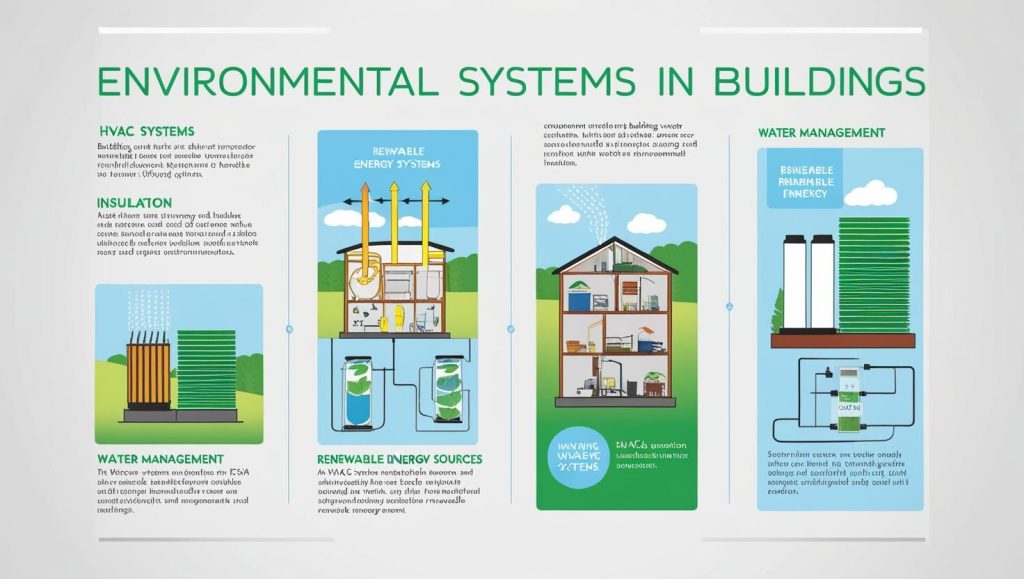Introduction
Environmental systems in buildings play a crucial role in ensuring comfort, efficiency, and sustainability. These systems include heating, ventilation, air conditioning (HVAC), lighting, plumbing, and renewable energy sources. Understanding these components is essential for students studying architecture, engineering, and construction management. This guide provides Environmental Systems in Buildings Homework Help to aid students in mastering these concepts.

Understanding Environmental Systems in Buildings
1. Heating, Ventilation, and Air Conditioning (HVAC)
HVAC systems are integral to maintaining indoor air quality and thermal comfort. They regulate temperature, humidity, and air circulation in buildings.
- Heating Systems: Boilers, furnaces, and heat pumps are commonly used to provide warmth.
- Ventilation: Ensures fresh air supply and removes pollutants.
- Air Conditioning: Controls indoor temperature and humidity levels.
External Resources:
2. Lighting Systems
Efficient lighting systems enhance energy savings and occupant well-being. Key components include:
- Natural Lighting: Maximizing daylight reduces energy consumption.
- LED and CFL Lights: More efficient than incandescent bulbs.
- Smart Lighting Controls: Automated sensors and timers optimize energy use.
3. Plumbing and Water Management
Plumbing systems in buildings ensure safe water supply and waste disposal. Water conservation strategies include:
- Low-flow Fixtures: Reduce water consumption.
- Rainwater Harvesting: Captures and reuses rainwater.
- Greywater Recycling: Treats and reuses water from sinks and showers.
External Resources:
4. Renewable Energy Integration
Many buildings incorporate renewable energy sources to enhance sustainability:
- Solar Panels: Convert sunlight into electricity.
- Wind Turbines: Generate power using wind energy.
- Geothermal Systems: Utilize underground heat for heating and cooling.
5. Sustainable Building Materials
Eco-friendly materials contribute to environmental sustainability:
- Recycled Steel and Concrete: Reduce resource consumption.
- Bamboo and Cork: Renewable alternatives for flooring and paneling.
- Green Roofs: Improve insulation and reduce stormwater runoff.
Importance of Environmental Systems in Modern Buildings
Environmental systems significantly impact energy efficiency, cost savings, and occupant health. Sustainable design principles, such as LEED certification, promote eco-friendly construction practices.
External Resources:
Common Challenges in Environmental Systems in Buildings
Despite their benefits, environmental systems present challenges:
- High Initial Costs: Green technologies require significant investment.
- Maintenance Complexity: Regular upkeep is essential for optimal performance.
- Integration with Existing Infrastructure: Retrofitting older buildings can be difficult.
How to Get Environmental Systems in Buildings Homework Help
Students often seek assistance to grasp complex environmental system concepts. Options include:
- Online Courses: Platforms like Coursera and Udemy offer HVAC and sustainability courses.
- Tutoring Services: Websites like Chegg and Khan Academy provide expert guidance.
- University Resources: Many institutions offer study guides and lab access.
Conclusion
Understanding environmental systems in buildings is essential for students in architecture and engineering fields. By leveraging modern technology and sustainable practices, buildings can achieve energy efficiency and environmental friendliness. For additional Environmental Systems in Buildings Homework Help, explore online resources and academic support services.


